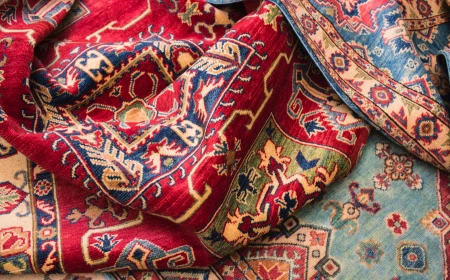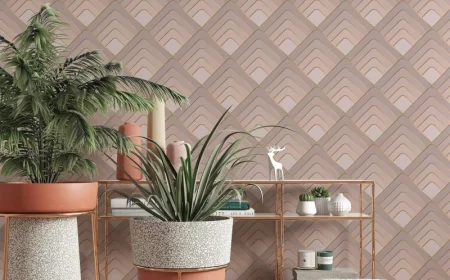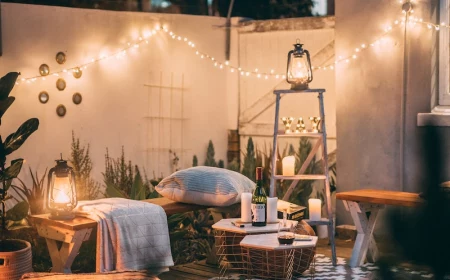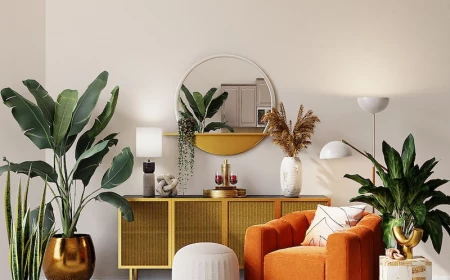Your Bookshelves Are Bending. Here’s How to Build One That Won’t.
I’ve been building furniture for a long time, and if there’s one thing I’ve seen over and over, it’s a beautiful bookcase tragically bowing under the weight of an amazing book collection. It’s a classic case of good intentions meeting bad physics. Someone buys a shelf that looks the part, but it just wasn’t built for the real-world load of hundreds of pounds of paper.
In this article
And let’s be real, a serious book collection is heavy. It’s a simple fact that a lot of mass-market furniture seems to conveniently forget. They’re often designed for aesthetics, not for the long-haul job of actually holding things up. That’s where good, solid construction principles come in. This is about creating a safe, strong, and beautiful home for your books—one that won’t sag, wobble, or pull away from the wall in the middle of the night.
This isn’t about the latest decorating fads. It’s about the foundational principles that separate a temporary fix from a piece of furniture you’ll have for life. We’re going to cover why shelves fail, the right materials for the job, and the building techniques that make all the difference.
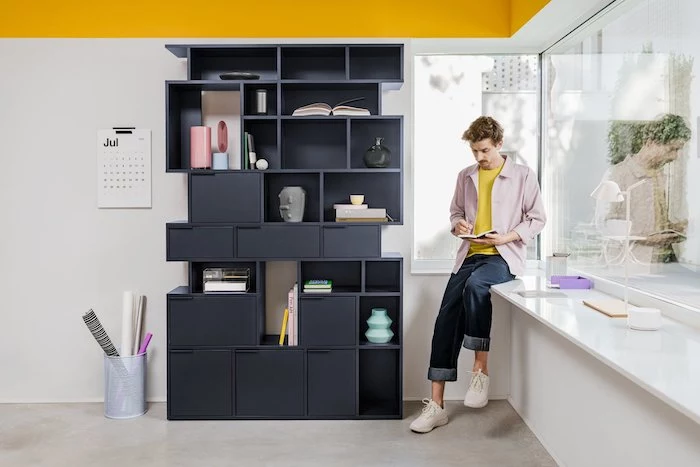
First, A Little Shop Talk on Why Shelves Fail
Before you even think about buying or building, you have to respect the forces at play. A bookcase is a structure under constant, relentless stress. The main enemy has a technical name, deflection, but around the workshop, we just call it shelf sag. It’s the slow, sad smile of an overloaded shelf.
So, How Heavy Are Books, Really?
Heavier than you think. As a rule of thumb for any project, I plan for about 20 to 25 pounds per linear foot of books. That means a simple 3-foot wide shelf is likely holding 75 pounds. Now, picture a tall bookcase with five of those shelves. You’re asking that frame to support nearly 400 pounds. That’s the weight of two grown adults, day in and day out. It’s a big ask for a flimsy piece of furniture.
The Forces Trying to Wreck Your Bookcase
It all boils down to two types of stress:
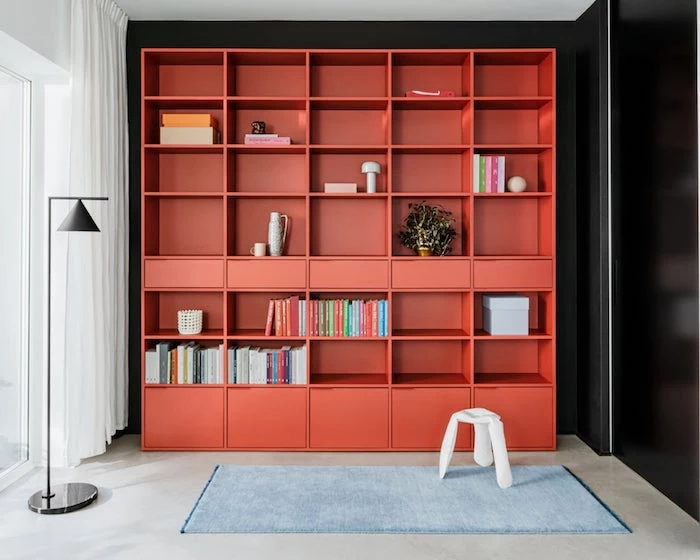
- Bending Stress: This is the classic culprit behind shelf sag. The longer the shelf (what we call the ‘span’) and the thinner it is, the more it’s going to bend in the middle.
- Shear Stress: This is the force attacking the connection points—the pins, the screws, the little brackets. It’s the entire weight of a loaded shelf trying to rip its supports right out of the sides.
Here’s the key takeaway: the relationship between a shelf’s span and its thickness is everything. A little physics principle says that if you double a shelf’s thickness, you make it roughly eight times more resistant to sagging. That’s a huge return! On the flip side, making a shelf longer drastically weakens it. This is precisely why you almost never see a professionally built bookcase with a shelf span wider than 36 inches without some kind of center support.
The Right Materials and Methods for the Job
In a pro workshop, we use materials and joinery that are proven to last. Understanding these will help you spot a quality piece from a mile away or, better yet, build one yourself.

Choosing Your Wood: A Quick Guide
The material is the foundation. Let’s break down the big three, with some real-world price perspective.
- Solid Wood: It’s the classic choice—strong, beautiful, and can be repaired. However, it can warp or twist with humidity changes, and it’s the most expensive option by far. For shelves, you want it to be at least 1-inch thick (often called 5/4 or “five-quarter” stock) to really fight sag.
- Cabinet-Grade Plywood: This is my personal go-to for most bookcase projects. I’m not talking about the rough stuff you see on construction sites. I mean high-quality hardwood plywood, like Baltic Birch, oak, or maple. Its cross-laminated layers make it incredibly stable and much more sag-resistant than other sheet goods. A standard 3/4-inch sheet will be your workhorse. A 4×8 sheet usually runs between $80 and $150, depending on the wood species.
- MDF (Medium-Density Fiberboard): MDF is smooth, takes paint beautifully, and it’s cheap (a 4×8 sheet is often in the $40-$60 range). But—and this is a huge but—it’s extremely prone to sagging. I learned this the hard way early in my career. I built some utility shelves for my own garage with it to save a few bucks. Within a year, they were shaped like bananas. MDF has no grain structure, so it gives up under load. I personally avoid it for any shelf longer than about 24 inches unless it’s heavily reinforced.
Quick tip: For a project you plan to paint, a fantastic combo is using 3/4-inch maple plywood for the main box and shelves, and solid poplar for the face frame and edging. You get the stability of plywood with the smooth, crisp painting surface of a solid wood edge.

How It’s Held Together Matters Most
Screws and glue are fine, but strong furniture relies on joinery—shaping the wood so the pieces lock together mechanically.
- Dados and Rabbets: A dado is just a square groove cut across a piece of wood. For a bookcase, we cut dados into the side panels where each shelf will go. The shelf then slots right into that groove. This means the entire bottom edge of the shelf is supported, not just a few wimpy pins. A rabbet is a similar groove cut along the edge of a panel, perfect for setting in the back panel.
- The Secret Weapon: A Solid Back: The flimsy, tacked-on cardboard back on cheap bookcases is a cardinal sin of furniture making. A solid 1/4-inch or 1/2-inch plywood back, set into a rabbet and then glued and screwed in place, is a critical structural element. It’s what prevents the case from racking (the tendency for a rectangle to collapse into a wobbly parallelogram). It makes the whole unit incredibly rigid.
- Fixed vs. Adjustable: Adjustable shelves are great for flexibility, but fixed shelves housed in dados are what make a bookcase rock-solid. A good compromise I often use for tall units is to make the top, bottom, and one middle shelf fixed, then use pins for adjustable shelves in between.
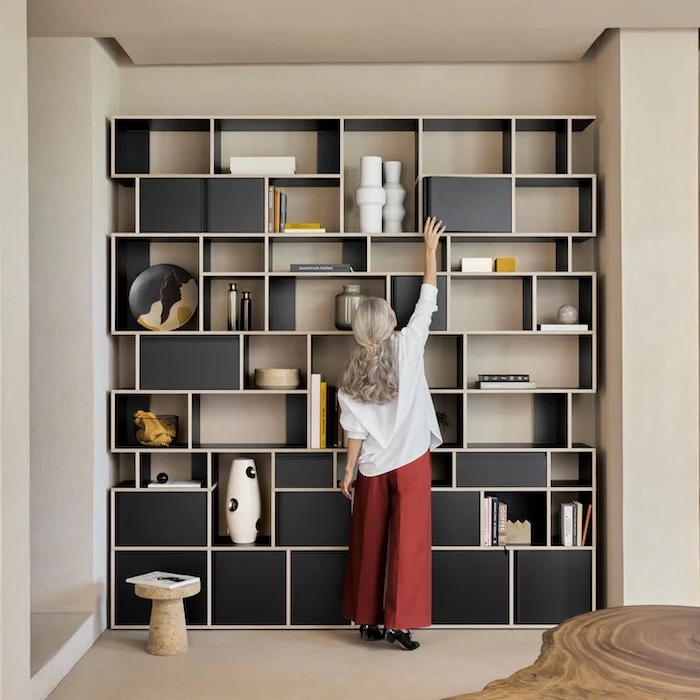
Practical Steps for Any Skill Level
You don’t need a massive workshop to safely house your books. It’s all about choosing the right approach for your budget and skills.
First: Do the Math!
Before you buy or cut anything, measure your collection. Seriously. Pull all your books off the shelves, stack them horizontally, and measure the total length. That’s your “linear feet” of shelving needed. Now add 25% to that number for future books. This is your magic number to guide your project.
Beefing Up a Store-Bought Bookcase
Got a wobbly, flat-pack bookcase? You can often perform a rescue mission.
- Add a Real Back. Ditch the cardboard. Get a piece of 1/4-inch plywood cut to size at a place like Home Depot or Lowe’s. Attach it to the back of your bookcase with wood glue and 1-inch screws every 6-8 inches. This alone will work wonders for stability.
- Reinforce the Shelves. This is the ultimate fix for sag. Buy a strip of 1×2 solid wood (poplar is cheap and strong). Cut it to the length of your shelf. Apply wood glue to the strip, clamp it to the underside of the shelf (either at the front or back edge), and drive in a few 1 1/4-inch screws. It acts like a mini-beam and dramatically increases stiffness.
- Anchor It to the Wall. This is not optional. More on that in a bit.
The DIY Route: A Simple & Strong Weekend Project
Building a basic, sturdy bookcase is a totally achievable project. For a typical 6-foot tall, 3-foot wide unit, here’s a shopping list:
- One 4×8 sheet of 3/4-inch hardwood plywood. This will make your sides, top, bottom, and shelves. Planning your cuts is key to using a single sheet!
- One 4×8 sheet of 1/4-inch plywood for that crucial structural back.
- One 8-foot piece of 1×2 solid wood. This is for the face frame or edge banding to cover the raw plywood edges.
- Good to know: To hide the layered look of plywood edges, you can use iron-on edge banding. It comes in a roll for about $10 and you apply it with a regular household iron. It’s a game-changer for a finished look.
- Hardware: Get 1 1/4-inch construction or cabinet screws (Heads up! Do NOT use brittle drywall screws), wood glue, and sandpaper.
A common beginner mistake is not pre-drilling holes for your screws, which can split the wood. Always drill a pilot hole slightly smaller than your screw. Another gotcha is
Inspirational Gallery
Plywood Power: For pure sag resistance, high-quality ¾-inch plywood, especially Baltic Birch, often outperforms solid wood of the same thickness due to its cross-laminated layers that distribute stress. It’s exceptionally stable and won’t warp with humidity changes.
Solid Wood Soul: Hardwoods like oak or maple offer classic beauty and the ability to create traditional joinery. They are the choice for an heirloom look but require careful wood selection to avoid warping.
For many professionals, a robust plywood case with solid wood facing is the ultimate combination of strength and beauty.
A standard 3-foot shelf of paperbacks can weigh 60 pounds. If they’re art books or textbooks, that weight can easily double to 120 pounds.
Elevate your plywood shelves and add significant sag resistance with this simple cabinetmaker’s trick:
- Cut a strip of 1×2 solid hardwood (like poplar or oak).
- Glue and clamp this
The most critical safety step: A tall, heavily-loaded bookcase is a serious tipping hazard. Never skip anchoring it. Use at least two ‘L’ brackets or furniture straps to secure the top of the unit directly to wall studs, not just the drywall.
To paint or to stain your custom creation?
Staining is ideal for showcasing the natural grain of beautiful hardwoods like cherry or walnut. It soaks into the wood, offering a timeless, warm aesthetic. Paint, however, is excellent for less-expensive materials like poplar or MDF. It provides a protective, uniform shell of color, perfect for integrating the bookcase into your room’s decor. For paint, a quality primer like Zinsser B-I-N is non-negotiable for a durable, professional finish.
Did you know? The span of a shelf can be made almost 50% more rigid simply by doubling its thickness.
This is a fundamental principle of structural engineering. If a 3/4-inch shelf sags too much over a 36-inch span, the best solutions are to either shorten that span to under 30 inches with a central support or to increase the shelf’s effective thickness to 1.5 inches by laminating two boards or adding a deep front nosing.
- Creates an incredibly strong mechanical lock between parts.
- Distributes the weight of the shelves across the entire frame.
- Eliminates the need for most visible screws, giving a clean look.
The secret behind heirloom-quality bookcases that never wobble? It’s not just glue, but strong joinery like dadoes—grooves cut into the vertical sides where the shelves slot in perfectly.
Your book collection will inevitably change and grow, so building in adjustability is a mark of smart design. The classic method involves drilling a series of clean, evenly-spaced 5mm holes for shelf pins. To ensure perfect alignment and spacing, a simple tool like the Kreg Shelf Pin Jig is an invaluable investment for any DIYer.
Beyond structural integrity lies the sensory experience. There’s a unique satisfaction in a well-made bookshelf—the subtle scent of a natural finish like Tung oil or a quality paste wax like Briwax, the smooth feel of a hand-sanded edge, and the quiet authority it lends to a room. It becomes more than storage; it’s a piece of architecture for your stories.

